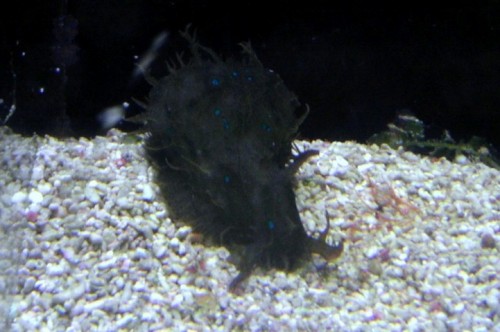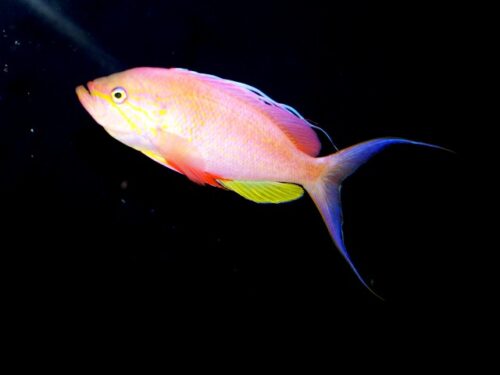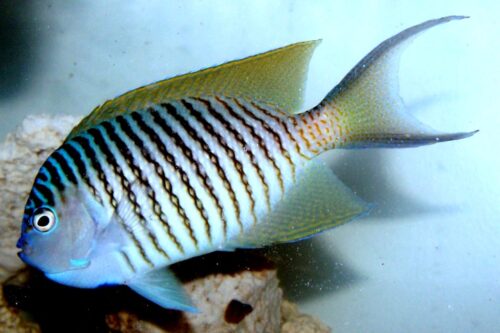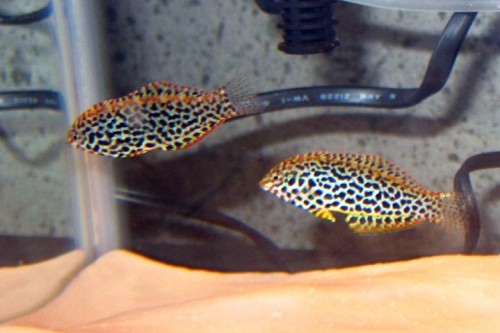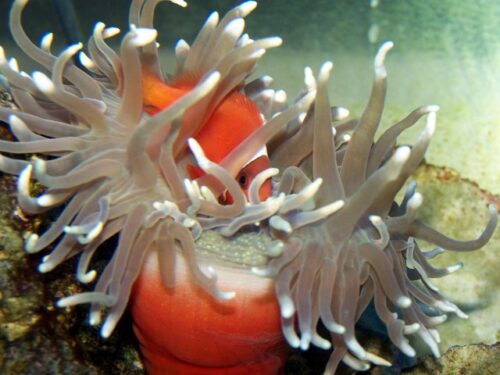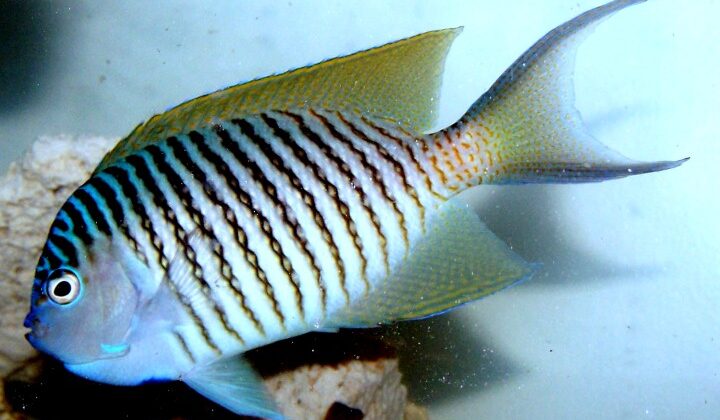
This is a guest post by Nikki of Reef’d Up Aquatics.
If human relationships and aquariums aren’t challenging enough for you, then I suggest the drama-filled world of fresh and saltwater relationships. Boys change sexes into girls, girls change sexes into boys, boys keep harems of ladies, and often…everyone reproduces en masse. It’s all done in the name of successfully passing DNA on to the next generation. If fish had a Facebook page, the relationship status would say, “It’s Complicated.”
Simultaneous Hermaphroditism
Outside the human world, hermaphroditism is quite typical, with most plants and many invertebrates having the reproductive capabilities of both male and female sexes (basic definition of hermaphroditism). Species with simultaneous (or as sometimes called synchronous) hermaphroditism have the reproductive organs of both male and female sexes at the same time. They can act as a male or as a female with a partner, which greatly increases their chance of successful reproduction. Self-fertilization is uncommon as that does not lend itself to genetic diversity.
Probably the most “complicated” ritual familiar to reef aquarists is that of the Sea Hare (Aplysia sp.). Sea hares are simultaneous hermaphrodites, and it is not unusual to find them in mating “chains”, where the forward-most sea hare is female, the rear-most sea hare is male, and the sea hares in between are acting as both male and female at the same time. True nudibranchs may act as both male and female with another nudibranch acting as both male and female. However, this is less genetically beneficial than the sea hare mating chain, as DNA is only shared between the two nudibranchs.
Blue Spot Sea Hare (Bursatella Leachii)
Sequential Hermaphroditism
Rather than being both male and female as in the simultaneous hermaphrodite case, some organisms start off as one sex at birth, and a variety of environmental factors can cause the organism to change sexes. Sequential hermaphroditism (also called dichogamy) is common in fish, and it is especially common in where the organisms exist in a group with a hierarchical structure. Generally, this type of hermaphroditism is separated into two subgroups based on what direction the sex is changing.
Protogynous Hermaphroditism
Organisms that start off as female and at some point change to a male are considered protogynous hermaphrodites. This type of hermaphroditism is frequently seen, as mentioned above, in groups with a ranking structure.
Male Anthias often keep harems
Saltwater angels in the Genicanthus genus (such as the bellus, watanabei, lamarck, etc.) are sequential (possibly bi-directional) hermaphrodites. The fish start life as females, and the more dominant fish turn into males (and may have the ability to turn back into a female if a more dominant male comes into power.)
Male Swallowtail Angel
Wrasses are also sequential hermaphrodites, but, they’re a bit more complicated. Wrasses gender is divided into three groups: female, “initial males”, or “terminal males.” They are born female or as an initial male, and either one can turn into a terminal male if the group structure allows. Females and initial males look rather similar, and they are able to mate with each other. Terminal males are the dominant figure in the group and typically vary greatly from the females in appearance.
These two leopard wrasses look like females, but based on behavior, one may be an initial male
Protoandrous Hermaphroditism
If organisms that start out as female and change to male are protogynous hermaphrodites, it only makes sense for organisms that start out as male and change into female be known as protoandrous hermaphrodites.
The classic example is that of the clownfish. Clownfish are born non-reproductive (neutral gender), some turn to reproductive males, and the most dominant turn into females. If something happens to the female of the group, the most dominant male will typically turn into the female.
The gender of this clownfish was hard to determine without a surrounding social structure
In conclusion, sex in both the saltwater and freshwater worlds is extremely complicated and is based on a wide variety of factors, including genetics, environment, and the hierarchial structure. And, it’s all done in the name of survival.
